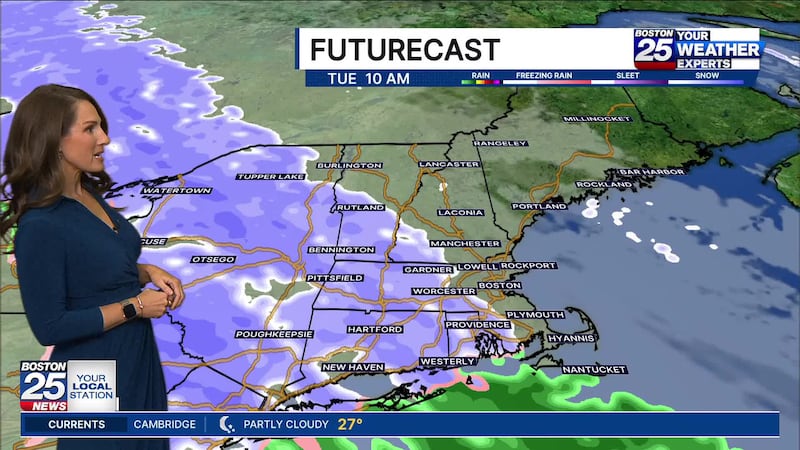A recent aerial survey conducted by a New England Aquarium (NEAQ) team noticed nearly three dozen endangered whales swimming in shipping lanes east of Nantucket.
Authorities are now asking mariners to slow down to avoid hitting the animals.
On February 20, scientists flew over the Great South Channel and spotted 31 right whales surface feeding in areas about 35 miles east of Nantucket and 20 miles east of Chatham, according to an NEAQ spokesperson.
According to the National Oceanic and Atmospheric Administration, there are only about 360 North Atlantic right whales left in the wild. Entanglements in fishing gear and vessel strikes are some of the leading causes of their population decline.
Just last month, investigators determined that entanglement in Maine fishing gear contributed to the death of a right whale that washed ashore on Martha’s Vineyard.
One of the whales documented, an adult female named “Caterpillar”, bares a long scar on her back from a vessel strike.
The whales’ surface feeding, although a rarity during the winter season, was a welcomed sight for researchers.
“Many of the whales identified so far are adults, including several calving females who have given birth in recent years,” said Katherine McKenna, Assistant Research Scientist in the Anderson Cabot Center for Ocean Life at the New England Aquarium. “Right whales only surface feed under specific conditions, so we felt really lucky to document them this winter.”
A voluntary slow speed zone was implemented on February 20 for mariners in the area of the Great South Channel to help protect the whales. Known as a Dynamic Management Area (DMA), the speed restrictions will stay in effect until March 7 from Maine to Virginia.
NOAA is considering modifications to the existing vessel speed rule to better protect the critically endangered species.
©2024 Cox Media Group












